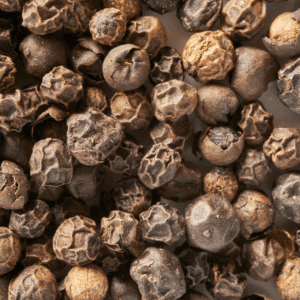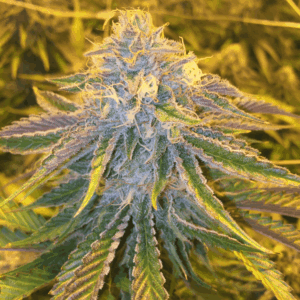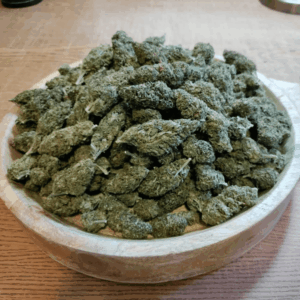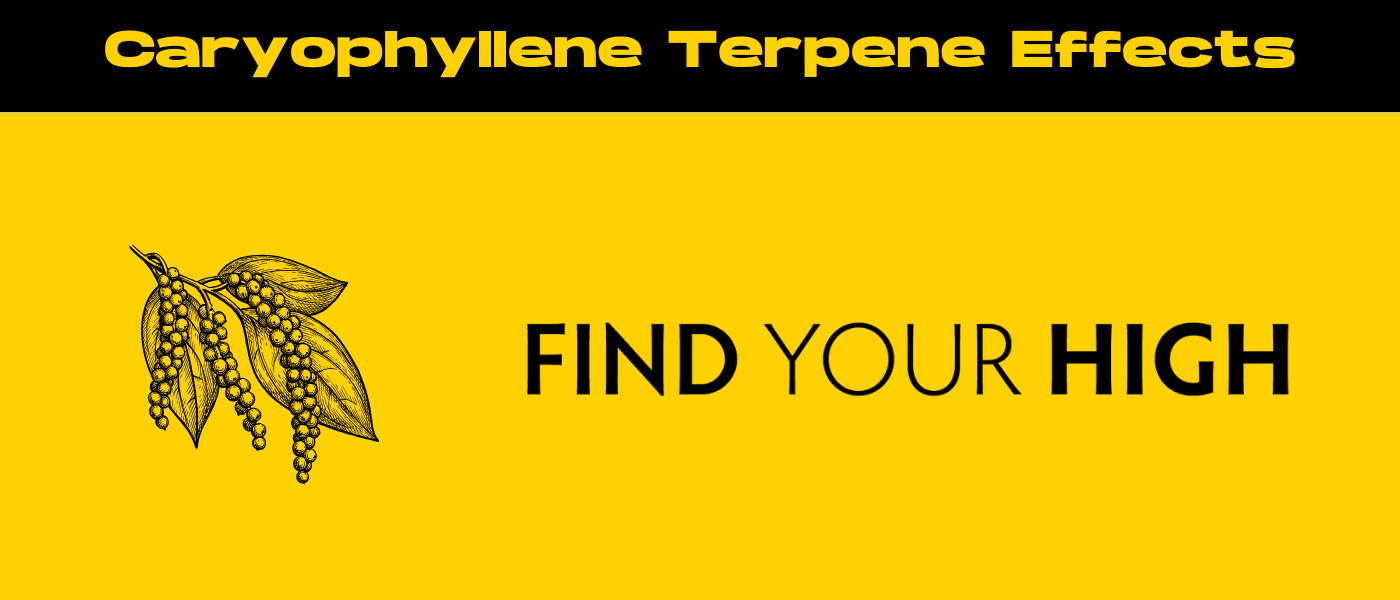Curious about caryophyllene terpene effects? When people think about the cannabis plant, their first thought often drifts toward cannabinoids like THC and CBD. However, there’s an entire world of cannabis terpenes that play a major role in shaping how cannabis smells, tastes, and even feels when consumed. One standout terpene is caryophyllene, sometimes referred to more specifically as beta caryophyllene or β caryophyllene. Unlike most other terpenes found in cannabis strains, caryophyllene is unique because it interacts directly with the endocannabinoid system, specifically the CB2 receptors.
This unique ability gives caryophyllene effects that go beyond simply influencing aroma. It can provide meaningful therapeutic benefits that affect the human body in noticeable ways, from pain relief and anti-inflammatory properties to helping with anxiety levels and even promoting better sleep. With cannabis gaining wider acceptance, both in the world of medical marijuana and recreational use, more people are curious about what makes certain cannabis strains stand out. Caryophyllene plays a major role in that conversation.
Terpenes 101: Why They Matter in Cannabis
Terpenes are natural compounds responsible for the distinct own scent and flavors of the many plants and herbs around us. Think of the sharpness of black pepper, the clove-like aroma of clove oil, or the herbal qualities of basil and hops—these are thanks to terpenes. Within the cannabis plant, terpenes do more than create smell; they contribute to different effects by working with cannabinoids in a phenomenon called the entourage effect.
While other known cannabis terpene varieties like myrcene, limonene, and pinene influence relaxation, energy, or focus, caryophyllene stands out because of its unique terpene interaction with cannabinoid receptors. Unlike other terpenes found in cannabis, caryophyllene actually acts more like a cannabinoid, influencing the body directly in ways that can provide real medicinal benefits.
Chemical Structure of Caryophyllene
Caryophyllene has a particularly interesting chemical structure. It’s classified as a bicyclic sesquiterpene, and its molecular framework allows it to bind selectively with CB2 receptors in the endocannabinoid system. These receptors are largely associated with the immune system and inflammation relief rather than with the psychoactive effects that come from CB1 receptor interaction with THC.
Because of this, caryophyllene is not considered a psychoactive compound in the traditional sense. Instead, it helps regulate the immune function and provides anti inflammatory effects, which is why several studies have connected it with reducing symptoms of chronic pain, chronic inflammation, and other wellness concerns. Its carboxylic acid group and ring structure are also responsible for its peppery aroma, which makes it easily recognizable among terpenes found in cannabis and many herbs.

Where is Caryophyllene Found?
Caryophyllene is commonly found in a variety of many plants, herbs, and spices outside of cannabis. It’s one of the main terpenes in black pepper, clove oil, basil, rosemary, hops, oregano, and even cinnamon. It’s also used in the food and beverage industry, as well as in chewing gum and essential oils thanks to its distinctive peppery aroma.
When it comes to the cannabis world, caryophyllene is found in cannabis strains known for their spicy, woody, or earthy undertones. This is why some indica dominant or hybrid strains carry grounding, soothing qualities. The terpene’s role in both the raw cannabis plant and in medical cannabis products makes it one of the most versatile and exciting compounds to study.
Caryophyllene’s Unique Interaction with the Endocannabinoid System
Most terpenes provide therapeutic effects indirectly by working in harmony with cannabinoids like THC and CBD. However, caryophyllene is unusual because it can directly activate endocannabinoid receptors, particularly CB2 receptors. These receptors are located throughout the immune system and the central nervous system, and their stimulation is often linked to inflammation relief, decreased anxiety, and analgesic properties.
Because caryophyllene does not bind to CB1 receptors, it does not produce intoxicating effects like THC. Instead, its action provides therapeutic benefits without altering perception or causing a high. This makes it valuable not only in recreational cannabis strains but also in medical cannabis and medical marijuana treatments where patients are looking for medicinal benefits without unwanted psychoactive traits.
Flavor and Aroma Profile
One of the easiest ways to spot caryophyllene found in cannabis or many herbs is through its own scent. It has a distinct peppery aroma often compared to freshly ground black pepper or spicy wood. It’s sharp yet earthy, with hints of cloves and cinnamon.
This flavor and aroma profile not only adds depth to cannabis products but also plays a role in the entourage effect, amplifying the different effects when combined with THC and other terpenes.
Psychoactive vs Non-Psychoactive Nature
When talking about caryophyllene terpene effects, it’s important to highlight that this is a non-psychoactive compound. While THC produces intoxication by binding to CB1 receptors, caryophyllene focuses on endocannabinoid receptors related to immune function and the body’s stress response.
This non-psychoactive nature makes it particularly useful in the field of medical cannabis, where patients may need pain relief, help with mood disorders, or anti anxiety support without the mind-altering sensations of THC. In this sense, caryophyllene is both a unique terpene and a valuable natural compound found in many plants that adds to the health benefits of cannabis without intoxicating effects.

Potential Therapeutic Benefits
One of the reasons caryophyllene has attracted so much attention is its wide range of therapeutic benefits. Recent studies and future studies continue to highlight its promise in many areas:
- Pain Relief: Caryophyllene offers analgesic properties that may help reduce muscle tension, headaches, or even chronic pain conditions.
- Anti Inflammatory Properties: Its ability to influence cb2 receptors means it can reduce chronic inflammation, arthritis symptoms, and other immune-related issues.
- Decreased Anxiety & Mood Disorders: Some research suggests it may help reduce anxiety and stabilize mood, making it useful for those managing anxiety or mood disorders.
- Neuroprotective Benefits: Evidence suggests caryophyllene may help protect the central nervous system, offering potential for conditions like Alzheimer’s or Parkinson’s.
- Liver Health: Certain recent studies suggest it could play a role in managing alcoholic steatohepatitis, a type of liver inflammation.
All these therapeutic effects make it a cornerstone of medical marijuana and cannabis terpenes research.
Caryophyllene and Pain Relief
Caryophyllene’s analgesic effects have been studied extensively. Its interaction with endocannabinoid receptors offers a more natural way to manage pain compared to pharmaceuticals. For people dealing with chronic pain, muscle tension, or conditions like arthritis, caryophyllene’s anti inflammatory effects provide significant medicinal benefits.
Unlike traditional painkillers that may carry risks of dependency or side effects, caryophyllene works gently with the human body to provide analgesic properties and promote wellness. That’s why it’s becoming an essential component of caryophyllene dominant strains and medical cannabis treatments.

Caryophyllene and Anxiety/Stress
Another fascinating aspect of caryophyllene terpene effects is its ability to help manage anxiety levels. By acting on CB2 receptors, it helps regulate the body’s stress response and contributes to decreased anxiety.
This makes it particularly appealing to those seeking anti anxiety support without turning to pharmaceuticals. People who experience mood disorders may find that cannabis strains high in caryophyllene provide a sense of calm and relaxation. Combined with other terpenes and cannabinoids, caryophyllene can promote a balanced mental state, supporting better sleep and improved quality of life.
Anti-Inflammatory Effects
When it comes to anti inflammatory properties, caryophyllene plays a major role. Inflammation is at the core of many conditions, from arthritis to autoimmune disorders. Caryophyllene’s interaction with cannabinoid receptors allows it to offer powerful inflammation relief without the side effects associated with NSAIDs or steroids.
The health benefits of caryophyllene extend beyond chronic inflammation management. By improving immune function and reducing swelling, it can support recovery from injuries and enhance overall wellness. These therapeutic benefits make it an important part of medical marijuana treatments and natural wellness approaches.
Neuroprotective Properties
The central nervous system benefits from caryophyllene’s actions as well. Several studies point toward its potential as a neuroprotective agent. By helping to regulate endocannabinoid receptors, caryophyllene may protect neurons from oxidative stress and inflammation.
This suggests potential in treating or managing neurodegenerative conditions like Alzheimer’s, Parkinson’s, or multiple sclerosis. While future studies are needed, the therapeutic effects of caryophyllene on the brain could be a game-changer in the field of medical cannabis and neurological treatment.

Common Cannabis Strains High in Caryophyllene
If you’re curious to experience caryophyllene terpene effects firsthand, there are plenty of cannabis strains to explore. Popular caryophyllene dominant strains include Bubba Kush, Girl Scout Cookies, Chemdawg, and Sour Diesel. These strains are not only known for their peppery aroma but also for delivering calming, grounding experiences that can ease pain and reduce anxiety.
For seasoned cannabis enthusiasts, these strains represent the perfect balance of flavor and therapeutic effects, offering relief without overwhelming intoxication.
Caryophyllene in Hemp-Derived Products
Caryophyllene isn’t limited to marijuana plants—it’s also present in hemp-derived cannabinoids and oils. This makes it accessible to those who prefer hemp derived products for wellness. Whether it’s tinctures, capsules, or essential oils, caryophyllene provides the benefits of caryophyllene without intoxicating effects.
Because it’s a natural compound found in many plants, it fits seamlessly into hemp-derived cannabinoids that focus on wellness, immune system support, and natural healing.
Legal Status and Accessibility
Since caryophyllene is a natural compound found in many herbs, spices, and the cannabis plant, it’s legal under most state laws. It’s used in essential oils, chewing gum, and even food flavorings, meaning it’s widely accessible beyond the cannabis market.
In the world of medical marijuana and cannabis products, caryophyllene continues to gain traction as people look for cannabinoids and cannabis terpenes that offer therapeutic effects without unwanted intoxication.

Final Thoughts: The Role of Caryophyllene in the Cannabis World
Among all the terpenes found in the cannabis plant, caryophyllene stands out for its unique ability to interact directly with endocannabinoid receptors. From pain relief and anti inflammatory properties to reduce anxiety, better sleep, and even potential support for alcoholic steatohepatitis, the health benefits are impressive.
As future studies expand, we’ll likely discover even more about how caryophyllene plays into the therapeutic effects of cannabis strains and medical cannabis treatments. For now, cannabis consumers and patients alike can appreciate the way this unique terpene contributes to the entourage effect, enhancing both the medicinal benefits and the classic cannabis experience.
Caryophyllene Terpene Effects: FAQs
1. How does caryophyllene make you feel?
Caryophyllene is a non-psychoactive terpene, so it won’t produce a traditional “high” like THC. Instead, users often report deep relaxation, reduced muscle tension, and a sense of calm. Its ability to interact with CB2 receptors in the endocannabinoid system contributes to pain relief, anti-inflammatory effects, and decreased anxiety, creating an overall soothing and therapeutic experience.
2. Is caryophyllene a sativa or indica?
Caryophyllene is found in both sativa and indica dominant strains, though it’s often prominent in indica dominant varieties known for calming effects. Its presence in a strain doesn’t dictate whether it’s sativa or indica but can influence the strain’s overall therapeutic benefits and aroma profile, giving it a peppery, spicy scent that complements either plant type.
3. Does caryophyllene make you sleepy?
Caryophyllene can promote relaxation and stress relief, which may help some people sleep better, especially when combined with other terpenes or cannabinoids. However, it isn’t a sedative on its own. Its calming properties work more subtly to reduce anxiety levels, muscle tension, and discomfort, indirectly supporting better sleep rather than causing outright drowsiness.
4. What is the difference between caryophyllene and limonene?
The main difference lies in their effects, aroma, and receptor activity. Caryophyllene has a spicy, peppery aroma and can directly bind to CB2 receptors, offering pain relief and anti-inflammatory effects. Limonene, on the other hand, has a citrus scent, is commonly found in sativa strains, and is known for uplifting and mood-enhancing effects. While both are cannabis terpenes with therapeutic potential, caryophyllene is more associated with soothing, calming effects, whereas limonene is linked to energy and mental clarity.
















